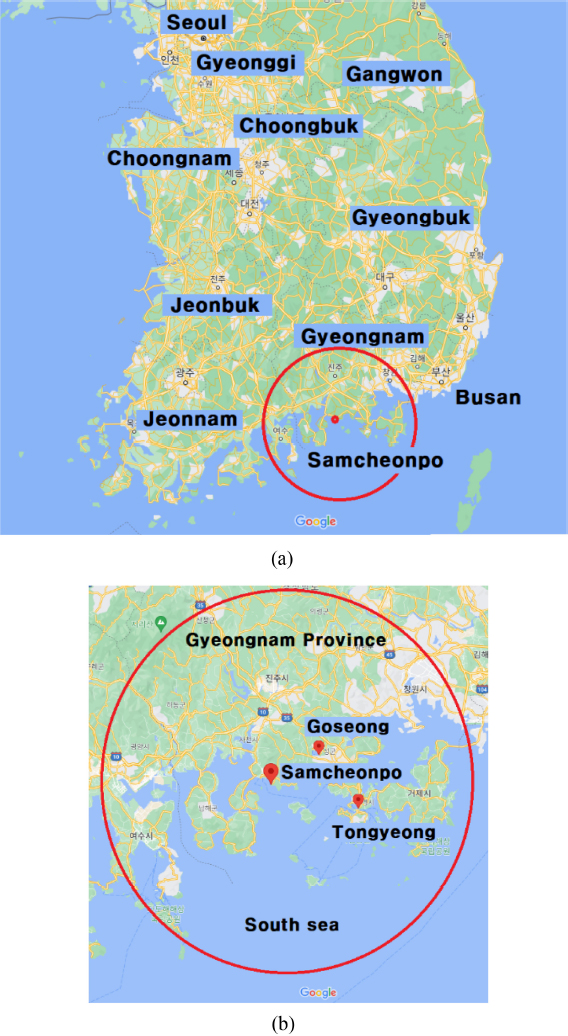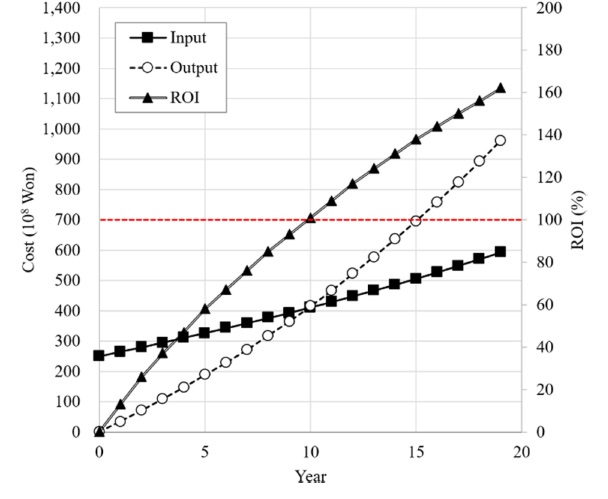
Economic Feasibility Study for Small Hydropower Plant Construction: in Samcheonpo Area
Copyright © The Korean Society for Precision Engineering
This is an Open-Access article distributed under the terms of the Creative Commons Attribution Non-Commercial License (http://creativecommons.org/licenses/by-nc/3.0) which permits unrestricted non-commercial use, distribution, and reproduction in any medium, provided the original work is properly cited.
This paper was presented at KSPE Autumn Conference 2023
Abstract
With global warming leading to abnormal weather phenomena and increasing carbon emissions, countries are implementing carbon emission reduction policies. Europe’s Carbon Border Adjustment Mechanism (CBAM) aims to promote environmentally responsible practices while maintaining industrial competitiveness. To avoid potential tariffs in the European market, Korea must vigorously pursue carbon emission reduction. Emphasizing renewable energy adoption is crucial for achieving eco-friendly and sustainable energy production. This study conducted an economic feasibility assessment for constructing small hydroelectric power plants using discharged energy from Goseong Green Power Plant. By evaluating economic viability, decision-makers could assess potential benefits and costs to support effective planning and implementation. Findings of this study could encourage investments in renewable energy projects, fostering a greener and more sustainable energy landscape for the future.
Keywords:
Small hydropower, Loss head, Power generation output, Energy, Economic feasibily study키워드:
소수력, 손실수두, 발전출력, 에너지, 경제성 검토1. Introduction
The average global temperature has been continuously rising, leading to more frequent occurrences of abnormal weather phenomena due to global warming. In 2022, several European countries, including the UK and France, experienced record-breaking high temperatures. Meanwhile, in Pakistan, heavy rainfall resulted in flooding, submerging one-third of the country’s territory and causing various disasters.
A severe cold wave struck Wyoming, USA, causing temperatures to plummet by 20oC in just 30 minutes. According to the announcement from Copernicus Climate Change Service, a branch of the European Union, the global average temperature in 2022 ranked within the top 5 since 1959, and the recent eight years (2015 to 2022) were analyzed as the warmest period in recorded history [1].
Currently, we are directly experiencing the disasters caused by global warming. In response, major countries around the world are implementing various carbon emission reduction policies to mitigate global warming. Among these efforts, Europe is introducing a policy called Carbon Border Adjustment Mechanism (CBAM) [2]. This policy aims to enhance the industrial competitiveness of companies within the EU and address the issue of Carbon Leakage. Starting in 2026, CBAM will impose a carbon levy on products imported into EU countries based on the carbon emissions associated with their production in the exporting country. This measure is expected to provide economic incentives for countries and companies with lower carbon emissions and, at the same time, promote environmentally friendly economic activities [3]. By implementing CBAM, Europe aims to support environmentally responsible practices while maintaining its industrial competitiveness and reducing carbon leakage. This policy serves as part of the global efforts to combat climate change and foster a sustainable future [4].
Korea, being heavily reliant on manufacturing and exports, has a high carbon emission rate in the world, which could lead to critical consequences on the international stage. Therefore, Korea must vigorously pursue carbon emission reduction to avoid the potential imposition of tariffs in the European market. To achieve this, the widespread adoption of renewable energy should be set as the nation’s top priority. Korea should actively promote the transition from fossil fuels to renewable energy sources. Expanding the use of renewable energy is crucial for fostering an eco-friendly and sustainable energy sector, thereby reducing carbon emissions. Embracing technologies such as solar power, wind energy, hydroelectricity, and biomass can drive continuous improvements in electricity generation and energy consumption across various industries. By implementing these measures, Korea can mitigate the risk of facing carbon-related tariffs and other trade barriers in the global market while advancing economic growth in an environmentally responsible manner. Renewable energy sources like wind and solar can be intermittent, relying on weather conditions for generation. This unpredictability can affect stable power supply and grid frequency. Energy storage, smart grid tech, and demand response programs are essential for managing these challenges and ensuring a reliable transition to cleaner energy.
The Climate Change Division of the Korea Meteorological Administration conducted a comprehensive analysis of the occurrence and frequency of major abnormal weather phenomena both domestically and internationally in 2022. Based on this analysis, they observed a significant increase in the frequency of recent abnormal weather events and evaluated their potential impacts in the future [1]. Orawan Jantasuto conducted research on the potential of hydropower systems as a renewable energy source. The study analyzed the low environmental impact and high efficiency that can be achieved with hydropower generation [5]. Bernd Spanhoff [6], Oliver Paish [7], and the Korea Energy Agency [8] have also conducted research on the current status and future prospects of hydropower development, highlighting its higher ease of installation and environmental friendliness compared to traditional hydropower plants.
Korea South-East Power Co., conducted a topographic analysis to establish design criteria for the construction of Units 3 and 4 at the Samcheonpo Power Plant, Gyeongnam Province. Harmonic analysis and the Hydrologic Engineering Center’s River Analysis System (HEC-RAS) model, which was developed by US Army Corps. of Engineers, were utilized to determine the water level, dam height, and maintenance water level. Meanwhile, the Korea Institute of Energy Research [9] researched a formula for evaluating investment costs and total revenue based on the operating period of hydropower plants. They adopted the cost-benefit analysis method to assess the economic viability of the hydropower plant. In evaluating the profitability of the project, the projected System Marginal Price (SMP), Renewable Energy Certificates (REC), and REC weighting were selected based on the revised enforcement in Korean government [10] and the report by the Korea Electrotechnology Research Institute.
Kim et al. [11] and Jeoune et al. [12] conducted research on the economic analysis of renewable energy generation. They attempted to develop tools for evaluating the economic viability of renewable energy facilities based on their interpretation and operational revenue. This study focuses on conducting an economic feasibility assessment for the construction of small hydroelectric power plants, aiming for environmentally friendly and sustainable energy production. The goal is to promote the establishment of small hydroelectric power plants to contribute to a more eco-friendly and sustainable energy generation process. Conducting an economic feasibility assessment for the additional construction of small hydroelectric power plants, utilizing the discharged near the Samcheonpo Power Plant, can provide a solid basis for supporting effective planning and implementation of future additional small hydroelectric power plants. By evaluating the economic viability, the decision-makers can assess the potential benefits and costs associated with the new project. This assessment will offer valuable insights into the financial viability and sustainability of the proposed small hydroelectric power plant, helping to ensure its successful planning and implementation.
Moreover, the findings of the economic evaluation can serve as crucial evidence and support when seeking financial investments or gaining approval from relevant authorities. The information obtained from the evaluation can play a vital role in encouraging further investments in renewable energy projects and contribute to achieving a greener and more sustainable energy landscape.
2. Small Hydropower Technology
2.1 Hydroelectric Energy
Due to the limited reserves of fossil fuels and heavy reliance on imports, Korea faces a vulnerable situation with an increasing energy dependency on foreign sources each year. As the country experiences rapid economic growth and improvements in the standard of living, the electricity demand is rising, leading to a shift from petroleum-centered energy consumption to alternatives such as coal (bituminous coal) thermal power, nuclear, hydro, and other renewable energies.
Water is classified as a clean resource in the field of alternative energy development. It falls under the category of recyclable resources, along with wind, hydro, tidal, solar, and geothermal energies. Moreover, the water used as cooling water in power plants can undergo a circulation process and be recycled. Promoting the development and utilization of these alternative and clean energy sources is essential for Korea to secure a stable energy supply and reduce its reliance on overseas energy imports. It would contribute to a more sustainable energy future and mitigate the risks associated with energy supply vulnerabilities. The types of hydroelectric energy are as follows:
- (1) (Small) Hydropower energy: It produces electricity based on the difference in water level.
- (2) Tidal energy (Flow energy): It utilizes the rapid flow of tides to generate electricity.
- (3) Tidal energy (Tidal range energy): It converts potential energy due to tidal level differences into kinetic energy and then generates electricity.
- (4) Wave energy (Wave power energy): It harnesses the energy from incoming waves to generate electricity.
- (5) Salinity gradient energy (Salinity power energy): It generates electricity from the pressure difference resulting from the meeting of freshwater and seawater.
2.2 Status of Domestic
Hydropower generation is significantly influenced by local geographical conditions. It is a small-scale and technically simple hydropower facility that blocks rivers with dams and artificially induces water flow into the reservoir to rotate low-head turbines for electricity generation. Hydropower generation is a facility that utilizes hydropower resources to produce electricity. Compared to other energy sources, such as nuclear or thermal power generation, it may have higher unit investment costs, but it has a longer lifespan and lower operation and maintenance costs.
Moreover, it is a clean energy facility with simple operation and control and has a minimal environmental impact. Since hydropower generation suitability varies based on local conditions, the installation and operation should be decided considering the specific conditions and requirements of each region. This way, it can contribute to sustainable and environmentally friendly energy production while supporting the development of local communities.
In Korea, small hydropower generation typically refers to power facilities with a capacity of 10,000 kW or less. In the United States, facilities with a capacity of 15,000 kW or less are classified as small hydropower, while in China, facilities with a capacity of 25,000 kW or less fall into the small hydropower category. However, according to the classification by the American Society of Civil Engineers (ASCE), the categorization is as follows:
- (1) Small hydropower: capacity up to 10 MW (10,000 kW)
- (2) Mini hydropower: capacity up to 1 MW (1,000 kW)
- (3) Micro hydropower: capacity up to 100 kW.
And, the classification based on head (or fall) for hydropower generation is as follows:
- (1) High: higher than 50 m
- (2) Medium: 15-50 m
- (3) Low: 2-15 m
Hydropower generation aims to utilize the highest possible head (fall) for ideal efficiency. Therefore, selecting and developing the most favorable generation method based on site conditions is crucial. Hydroelectric power generation can be broadly classified according to terrain and watercourse conditions as follows:
- (1) Run-of-river type: The method utilizes the swift current in the upstream region of a river to rotate the turbines and generate power. It is commonly used in areas with steep river gradients.
- (2) Storage type (Dam type): Dams are installed in rivers with lower gradients in the middle and downstream regions. Abundant water flow is harnessed by creating a reservoir (impoundment), and the head produced by the water level difference in the reservoir is used to rotate the turbines for electricity generation.
- (3) Dam-waterway type: This involves constructing dams in areas with significant bends in the river. Water from the reservoir is guided through a waterway (tunnel, etc.) to a lower elevation, utilizing the generated head for electricity production.
The government-initiated small hydropower technology development project began with the site survey for small hydropower generation in 1974, following the first oil crisis.
In 1975, a research survey and design for a pilot hydropower plant were conducted, and Korea Electric Power Corporation (KEPCO) constructed a 450 kW small hydropower plant in Anheung, Gangwon Province, setting a pioneering example of domestic small hydropower development.
However, significant development of small hydropower plants started after the second oil crisis when the importance of alternative energy development was recognized, encouraging private investment in small hydropower plants and supporting related technology research. Table 1, obtained through a small hydropower site survey by the Ministry of Science and Technology and the Korea Atomic Energy Research Institute in 1974, shows 2,400 potential development areas with a total estimated capacity of 582.5 MW in South Korea. And Fig. 1 shows several provinces in Korea.
Currently, most operating small hydropower plants in the country have a capacity of less than 3,000 kW and are predominantly located in areas with significant heads (falls).
However, the availability of high-head sites is decreasing, necessitating the development of technologies to effectively harness low-head small hydropower resources in the future.
To maximize the economic viability of small hydropower plants, the government should actively develop optimal design and operation techniques.
This includes advanced turbine configurations, efficient reservoir management, smart grid integration, and demand response mechanisms to enhance overall performance and sustainability. These efforts will contribute to a more resilient energy system with economic benefits for the country and local communities.
2.3 Status of Advanced Countries
In many countries, including advanced nations and China, the social and economic importance of small hydropower development is recognized. They collect hydrological data and basic statistical information, putting efforts into technological development and widespread adoption to promote small hydro-power as a significant energy source.
Moreover, they have been working on developing resource feasibility assessment methods, optimal design techniques for power plants, standardization of small hydropower systems, automatic control systems, development of civil engineering materials, and optimal operation techniques to enhance the economic viability of small hydropower plants. As a result, numerous pilot small hydropower plants have been developed, and many small hydropower plants are currently in operation worldwide, as shown in Table 2.
Internationally, the average power capacity per small hydropower plant is around 1,000 kW, while in Korea, it is about 1,800 kW, which is relatively high compared to foreign counterparts. This is due to the tendency for increased power capacity in small hydropower plants to improve economic viability. However, foreign countries have developed and promoted low-head, small-capacity systems that maintain economic viability, even with lower-head conditions. For instance, Germany has an average power capacity of only 58 kW per small hydropower plant but actively utilizes small hydropower resources through effective development and utilization
3. Calculation of Small Hydropower Systems
3.1 Power Output P
The power output, or electrical power P, is calculated as follows [13,14].
| (1) |
where, ρ, heff, Q, ηT, and ηG represent the density of seawater [kg/m3], effective head [m], flow rate [m3/s], turbine efficiency, and generator efficiency, respectively. Additionally, the effective head heff refers to the net head, which is the total head htotal minus the head loss hloss.
3.2 Total Flow Rate Q
This study aims to evaluate the economic feasibility of additional small hydropower generation using the energy. The total flow rate Q is either the rated flow rate or the measured flow rate like Eq. (2).
| (2) |
where, q and ni represent th e average discharge rate (11.3 m3/s) of a cooling water circulation pump (CWP) at the Goseong Green Power Plant and the number of operating CWPs during each season (nsummer = 8, nspring,fall = 6, nwinter = 4), respectively.
3.3 Total Head htotal
Explanation of various terms represented in the tide chart for selecting effective water level:
- ○ Mean Sea Level (MSL): The sea level that would exist in the absence of tides, defined as the average of tide levels observed during a specific period. Mean Sea Level can vary monthly and gradually changes over the course of a year, so it is often determined by averaging the tide levels over multiple years, although sometimes the average of tide levels over one year is used.
- ○ Approximate Lowest Astronomical Tide (Datum Level, DL) / Approximate Highest Astronomical Tide: The level that is located below/above Mean Sea Level by the sum of the half range of the major four tides. The DL is used as a reference for measuring the height of the sea level, and the Approximate Highest Astronomical Tide is used as a standard for determining the coastline. To calculate these levels, a minimum of 30 days of hourly tide observations is required.
- ○ Mean Low Water (MLW) / Mean High Water (MHW): The sea level averaged over the entire period during the tidal cycle, positioned below/above Mean Sea Level by the half range of the M2 constituent tide. The difference between MHW and MLW is called the mean tidal range, and the difference between MHW and the datum level is known as the mean tidal level.
The reason for conducting harmonic analysis and estimating tide levels is that it provides a more convenient and accurate method compared to using statistical data from observed tide levels. Utilizing the estimated tide curves and tidal constants derived from harmonic analysis is more practical and facilitates the assessment of power generation and the economic viability of the project. For determining the effective head, the tide levels in the vicinity of the Samcheonpo Power Plant’s discharge outlet can be analyzed and calculated. The average sea level (EL) is -0.03 m, the highest astronomical tide is 2.13 m, the lowest astronomical tide is -2.22 m, the mean spring high water is 1.28 m, and the mean spring low water is -1.34 m. The tidal range is 2.62 m, the mean tidal range is 1.79 m, and the neap tidal range is 0.97 m.
In the determination of the Samcheonpo Small Hydroelectric Power Plant’s head, the tide levels at the nearby Tongyeong tide gauge station are used. By analyzing the relationship between the observed tide levels at the Tongyeong tide gauge station and the downstream observed tide levels at the discharge outlet for six years (1998-2003), the observed tide levels at the Tongyeong tide gauge station are transferred to the downstream location for application. Fig. 1(b) shows the location of Goseong, Tongyeong, and Samcheonpo.
To transfer the tide levels from the reference point to an arbitrary point, harmonic constants known as “harmonic ratios” and “harmonic factors” are used. The harmonic ratio represents an additive factor to the harmonic constituent at the standard port, allowing the approximation of the tide level at the arbitrary point to the standard time. On the other hand, the harmonic factor (ratio) is used to multiply the tide level at the standard port, thus obtaining an approximation of the tide level at the arbitrary point.
- ○ Harmonic Ratio: The harmonic ratio represents the time difference between high and low tides at two different locations. In this study, when using the height difference between the dam’s maintenance level and the tide level, the time difference of high or low tides does not significantly affect the analysis results, so it was not considered.
- ○ Harmonic Factor: The procedure for transferring the tide level from the reference point to the arbitrary point using the harmonic factor involves subtracting the average sea level at the reference point and multiplying it by the harmonic factor. The resulting value is then added to the average sea level at the arbitrary point to obtain the transferred tide level. In this study, the harmonic factor was determined using actual tide level data between two points. The observed tide level data between the two points during the period from ‘04. 1. 31 to ‘04. 2. 16 were used. After removing the average sea level from the observed data at both points and aligning them to the same average sea level, the harmonic factor was determined by comparing the two values at high or low tides that best represented the tide level difference. The resulting harmonic factor was found to be 1.19
The procedure for determining the dam height involves conducting calibration of the HEC-RAS model based on existing water level measurement data. Subsequently, the water level at the dam construction stage during the maximum flow condition and the water level after dam construction, when the operation of the power generators is interrupted due to dam overflow, are compared. This comparison helps identify a suitable dam height that ensures no adverse impacts at critical evaluation points. The calibrated HEC-RAS model is input with the design flow of the maximum flow rate (156.2 m³/s) and the baseline water level of approximately the highest astronomical tide (EL. 1.585 m). Then, the water surface profiles before and after dam construction are calculated, and the effect of drainage water level is reviewed to determine the final dam height. The total length of the dam, located downstream of the powerhouse, is approximately 110 meters.
Considering overall design safety aspects, the length of the spillway is set at around 90 meters, which is about 80% of the total length.
During the review of drainage water level impacts, it is essential to ensure that the existing upstream areas are not affected, particularly in the circulation pump system.
Additionally, the condition that the water level at the seal well in the upstream circulation water outlet should not exceed EL. 5.965 meters must be strictly satisfied.
The water surface profiles were calculated for five different dam heights in the range of EL. 3.70 to 4.10 meters before and after dam construction, and the results are shown in Table 3.
To avoid any adverse impact on the upstream areas, the maximum dam height without affecting the existing upstream areas was selected as EL. 3.80 meters. At this dam height, the water level at the dam crest was found to be EL. 4.65 meters.
The upstream water level of the dam is a crucial factor in determining the head difference and varies depending on the type of head difference used.
It is preferable to adopt a head difference type that can maintain the dam’s upstream water level as constant and high as possible. Moreover, for cases like the small hydropower plant near Samcheonpo, where water is discharged into the sea, it is necessary to consider the relationship with the tidal level and additionally review the 24-hour power generation feasibility.
Considering these factors, the adjustable axial Kaplan head difference was primarily considered, and based on the dam height of EL. 3.80 meters, the upstream water level was determined as EL. 3.60 meters.
3.4 Head Loss hloss
The calculation of the head loss hloss is aimed at determining the net head (net elevation difference) required for the power generation calculation. It is obtained by subtracting the headwater elevation (forebay elevation) from the tailwater elevation (downstream elevation) at the downstream side, considering the total gross head. The head loss is calculated as the sum of three major components, as shown in Eq. (3) [15].
| (3) |
where he, hf, hb are head loss due to inlet flow (inlet losses), head loss due to friction from inlet to the penstock entrance (friction losses) and head loss due to bending near the inlet (bend losses), respectively.
Each of these components is expressed by the following equations: [15]
| (4) |
| (5) |
| (6) |
where fe, ff, and fb are the inlet loss coefficient, the friction loss coefficient, and the bend loss coefficient, respectively.
And v is average flow velocity, L is the centerline distance from the inlet to the weir, and D is the diameter of the pipe.
3.5 Power Generation Output P
By applying the previously obtained variables to Eq. (1), the seasonal average power generation output is estimated to be 2,627 kW as shown in Table 4. Therefore, the expected total annual generation is 23,013 MWh. Taking into account the internal efficiency of 2.5% for the Goseong power plant’s ocean tidal power over the last year (April 2022 to March 2023), and the existing operational efficiency of 70.0% for the Samcheonpo power plant’s ocean tidal power, the estimated annual transmission amount is 15,706 MWh
3.6 The Selection of the Turbine
In hydropower generation, various types of turbines are used, including the Pelton turbine, Francis turbine, and Propeller turbine, each with its distinct characteristics:
- (1) Pelton turbine: The Pelton turbine operates at high water heads (the difference in water levels) and is commonly used in mountainous areas. The core component of this turbine is the Pelton wheel, which consists of one or more separate nozzles. The wheel has multiple cup-shaped blades, and as the water stream from the nozzles hits the blades, it changes direction and causes the wheel to rotate. The Pelton turbine exhibits high efficiency and can generate significant torque even at low flow rates.
- (2) Francis turbine: The Francis turbine utilizes both water pressure and velocity to operate. It typically works at medium water heads and is the most widely used type of turbine. The Francis turbine comprises a rotating runner and a fixed stator. Water flows through the stator’s guide vanes, gaining pressure and velocity, and then imparts energy to the rotating runner, causing it to spin. The Francis turbine can efficiently operate across a wide range of water heads and flow rates.
- (3) Propeller turbine: The Propeller turbine, unlike other turbine types, has a large-diameter propeller-like rotor and is suitable for effectively operating with high flow rates and low water heads. As a result, it is considered suitable for the subject of this study, the tidal power plant in Samcheonpo.
- The main characteristics of the Propeller turbine are as follows:
High flow capacity: The Propeller turbine is specialized in handling large volumes of water and is commonly used in water supply power plants and pumping stations.
Low water head suitability: The Propeller turbine operates effectively at low water heads. It can efficiently extract the energy from the water even when the difference in water levels is not significant.
Low rotational speed: The Propeller turbine operates at relatively low rotational speeds compared to other turbine types. This is achieved by using a large-diameter propeller rotor.
Relatively lower efficiency: In some cases, the Propeller turbine may have relatively lower efficiency compared to other turbine types. Hence, for this study, the suitable type of penstock is considered to be the Propeller penstock
4. Economic Analysis
In this study, the economic analysis of the small hydropower plant under consideration will be conducted using the benefit-cost analysis method for hydropower plants adopted by the Korea Institute of Energy Research [10]. Long-term investment projects such as hydropower development often rely on the benefit-cost ratio, which calculates the present value of the cash flow of benefits obtained from the investment costs over the operation period of the power plant. If the total benefits exceed the total costs, the project is deemed to be beneficial. Through this analysis, factors such as benefit-cost ratio and payback period can be determined, aiding in the assessment of the project’s feasibility based on various parameters, including the installed capacity and construction costs.
The initial investment cost C0 for hydropower development can be divided into direct costs and indirect costs. Direct costs include expenses related to civil works, mechanical and electrical equipment, and auxiliary buildings for the power plant, while indirect costs include design fees, permits, and construction supervision fees, among others. If the small hydropower plant is operated for N years, the total investment cost includes the initial investment cost C0 and the financial costs incurred over N years, as well as the annual operation and maintenance expenses for the power plant. Therefore, when assuming the operating period of the hydropower plant as N years, the total investment cost Cinput after N years can be calculated using Eq. (7):
| (7) |
where A represents the predicted annual operation and maintenance expenses (OM) at the N-year point, r is the annual interest rate. The annual operation and maintenance expenses A should include costs for operational and maintenance activities. However, predicting these costs precisely can be challenging. Therefore, in the study, the research applied the operation and maintenance cost ratio for renewable energy facilities provided by the Korea Institute of Energy Research. Therefore, the total investment cost Cinput at the N-year point can be calculated using Eq. (8) as follows:
| (8) |
where the initial investment cost C0 is assumed to be 25 billion KRW, and the annual interest rate r is set at 4.0% based on the Bank of Korea’s benchmark rate for the past 15 years. The operation and maintenance cost ratio rm is applied as 2% of the initial investment cost. To calculate the revenue generated through the operation of the hydropower plant, factors such as the generated electricity and the selling price of electricity must be considered. Therefore, the total revenue over N years Coutput is calculated as shown in Eq. (9).
| (9) |
where Ea is the annual electricity production [MWh], which is calculated to be 15,706 MWh based on the hydropower generation estimation from section 3.5. Additionally, Ci represents the annual electricity selling price [KRW/MWh], which can be expressed as shown in Eq. (10).
| (10) |
where CSMP,i, CREC,i represent the annual SMP (System Marginal Price) electricity price and REC (Renewable Energy Certificate) electricity price for each year, respectively. μ is the REC weight for hydropower generation, which is given as 1.2. The annual SMP electricity price and REC electricity price are based on the forecasts conducted by the Korea Electric Power Corporation (KEPCO), as shown in Table 5.
Additionally, the Return on Investment (ROI) for the proposed hydropower plant can be defined as shown in Eq. (11).
| (11) |
When the Return on Investment (ROI) for the hydropower plant is greater than 100%, it is considered economically feasible. The ROI represents the ratio of the total revenue to the total investment cost for the hydropower plant.
The point at which the ROI reaches 100% can be defined as the Payback Period, which is the time it takes for the total revenue to equal the total investment cost for the hydropower plant.
Table 6 compares the N-year total investment cost Cinput calculated using equation (8), the total revenue over N years Coutput calculated using equation (9), and the ROI for each year. And Fig. 2 is a graph representing the Cinput and the Coutput from Table 6.
From 10 years after construction, the total revenue starts to exceed the total investment cost, meaning Coutput > Cinput. Therefore, it takes 10 years after the new construction and normal operation to begin recovering the investment cost, and after that, profit is generated. After 15 years, the project starts to generate more than 50% profit of the initial investment cost. Thus, based on this study, the payback period for the construction cost of 250 billion won is 10 years.
5. Conclusion
We conducted an economic feasibility analysis study on the additional construction of a small hydropower plant, utilizing the head energy of the discharged near the Samcheonpo Power Plant’s area. It is determined that the economic analysis of the hydropower plant is achieved, with a Return on Investment (ROI) exceeding 100% starting from the 10th year of its normal operation. The results of the economic analysis can serve as fundamental data for future site selection and design decisions regarding small hydropower projects.
NOMENCLATURE
| P : | Power Generation Output |
| ρ : | Density of Seawater |
| h : | Effective Aberration |
| Q : | Flow Rate per Unit Time |
| ηT : | Turbine Efficiency |
| ηG : | Generator Efficiency |
| q : | Average Water Discharge per of a Conventional Water Pump |
| ni : | Number of CWP Operations by Season |
| hloss : | Head Loss |
| he : | Loss Head due to Inlet Inflow |
| hf : | Friction Loss Head from the Inlet to the Water Wheel Inlet |
| hb : | Head Loss in Bending near the Inlet |
| fe : | Inflow Loss Factor |
| ff : | Friction Loss Factor |
| fb : | Bending Loss Factor |
| v : | Average Flow Rate |
| L : | Center Line Distance from Inlet to Water Inlet |
| D : | Tube Diameter |
| C0 : | Initial Investment Cost for Hydropower Development |
| A : | Estimated Annual Maintenance Cost at the Time of N Years |
| r : | Annual Interest Rate |
| rm : | Operation Maintenance Ratio |
| Ea : | Annual Power Production |
| Ci : | Electricity Sales Unit Price by Year |
| CSMP,i : | SMP Electricity Unit Price by Year |
| CREC,i : | REC Power Unit Price |
| μ : | REC Weight for Hydropower |
Acknowledgments
This work was supported by Korea Institute of Energy Technology Evaluation and Planning (KETEP) grant funded by the Korean Government (MOTIE) (No. 20214000000520, NZM).
REFERENCES
- Korea Meteorological Administration, (2023), 2022 An Abnormal Climate Report, (ISSN 2765-2750). https://www.korea.kr/archive/expDocView.do?docId=40408
-
Lim, B., Hong, K., Yoon, J., Chang, J.-I., Cheong, I., (2021), Pitfalls of the EU’s carbon border adjustment mechanism, Energies, 14(21), 7303.
[https://doi.org/10.3390/en14217303]

- Bacchus, J., (2021), Legal issues with the European carbon border adjustment mechanism, CATO Briefing Paper, 125, 3-6.
-
Kulovesi, K., van Asselt, H., (2020), Three decades of learning-by-doing: the evolving climate change mitigation policy of the European Union, Climate and Energy Policies in the EU, China and Korea-Transition, Policy Cooperation and Linkage (Edward Elgar Forthcoming). https://ssrn.com/abstract=3859498
[https://doi.org/10.2139/ssrn.3859498]

-
Jantasuto, O., (2015), Review of small hydropower system, International Journal of Advanced Culture Technology (IJACT), 3(1), 101-112. https://www.earticle.net/Article/A253533
[https://doi.org/10.17703/IJACT.2015.3.1.101]

-
Spänhoff, B., (2014), Current status and future prospects of hydropower in Saxony (Germany) compared to trends in Germany, the European Union and the World, Renewable and Sustainable Energy Reviews, 30, 518-525.
[https://doi.org/10.1016/j.rser.2013.10.035]

-
Paish, O., (2002), Small hydro power: Technology and current status, Renewable and Sustainable Energy Reviews, 6(6), 537-556.
[https://doi.org/10.1016/S1364-0321(02)00006-0]

- Korea Energy Agency New Renewable Energy Center, (2008), Presentations of the second initiative meeting on the supply of new renewable energy to local areas. https://www.knrec.or.kr/biz/pds/pds/view.do?no=182
- Korea Ministry of Strategy and Finance-Korea Institute of Energy Research, (2007), Economic analysis of renewable energy (final report) (UCL G701:E-00067372697). https://www.nl.go.kr/NL/onlineFileIdDownload.do?fileId=FILE-00008503101
-
Lee, Y., Seo, I., (2019), Sustainability of a policy instrument: Rethinking the renewable portfolio standard in South Korea, Sustainability, 11(11), 3082.
[https://doi.org/10.3390/su11113082]

- Kim, C.-M., Kim, K.-Y., (2008), A study on economic analysis of new renewable energy power (photovoltaic, wind power, small hydro, biogas), Journal of the Korean Solar Energy Society, 28(6), 70-77.
-
Jeoune, D.-S., Kim, J.-Y., Kim, H.-G., Kim, J., Youm, C., Shin, K.-Y., (2019), Development of economic evaluation solution and power prediction of renewable energy system, Journal of the Korean Solar Energy Society, 39(6), 93-112.
[https://doi.org/10.7836/kses.2019.39.6.093]

-
Zema, D. A., Nicotra, A., Tamburino, V., Zimbone, S. M., (2016), A simple method to evaluate the technical and economic feasibility of micro hydro power plants in existing irrigation systems, Renewable Energy, 85(1), 498-506.
[https://doi.org/10.1016/j.renene.2015.06.066]

- Ozigis, I. I., Oodo, S., Muhammad, I., (2019), A feasibility study of mini-hydroelectric power plant for seasonal base load, Arid Zone Journal of Engineering, Technology and Environment, 15(SPi2), 124-145.
- White, F., (2021), Fluid Mechanics 9th Edition, McGaw-Hill.
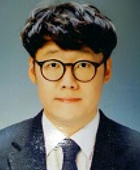
Assistant manager in the Gosung Generation Division, Plant Management Team, Korea South-East Power Co., Ltd.. His research interest is renewable energy and physics.
E-mail: dongoak17@koenergy.kr

M.Sc. candidate in the Department of Mechanical and Aerospace Engineering, Gyeongsang National University. His research interest is machinery design and structural analysis.
E-mail: gnurci7@naver.com
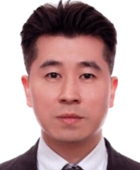
Associate Professor in the Department of Mechanical Convergence Engineering, and Engineering Research Institute, Gyeongsang National University. His research interest is manufacturing processes, 3D printing, machining, and soft actuators/robots.
E-mail: wschu@gnu.ac.kr
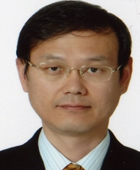
Professor in the School of Mechanical Engineering, and Engineering Research Institute, Gyeongsang National University. His research interests are vibration control, system dynamics, and power train.
E-mail: cksong@gnu.ac.kr


